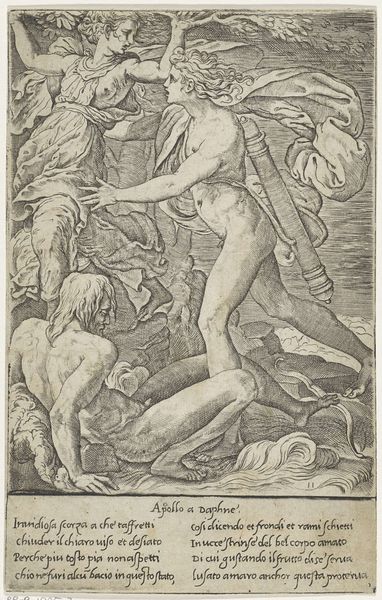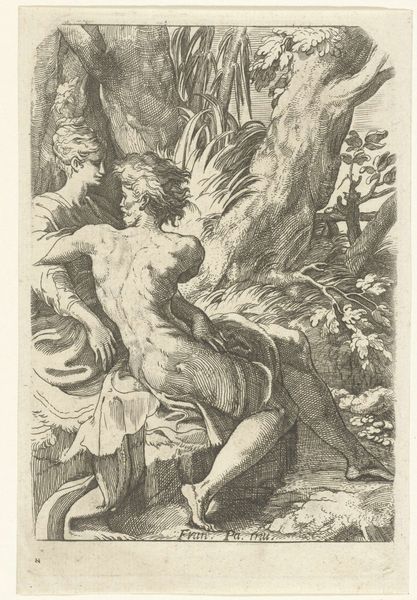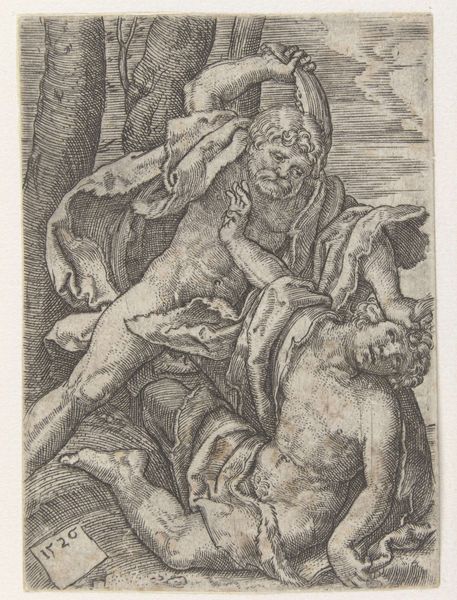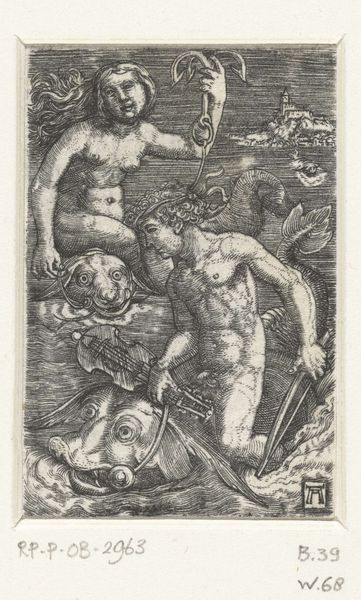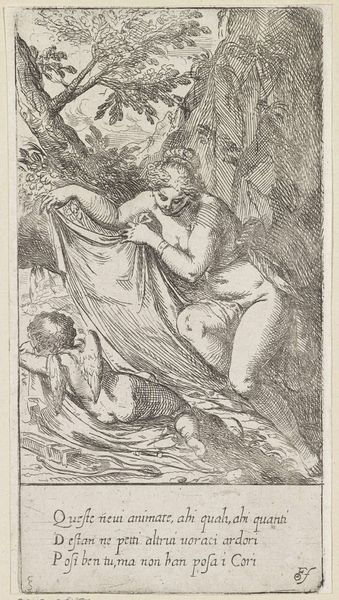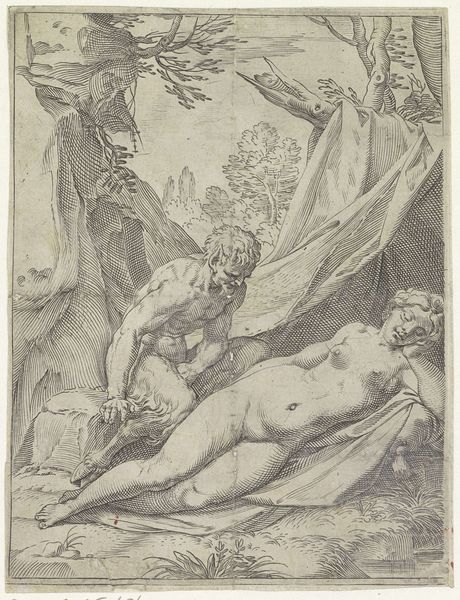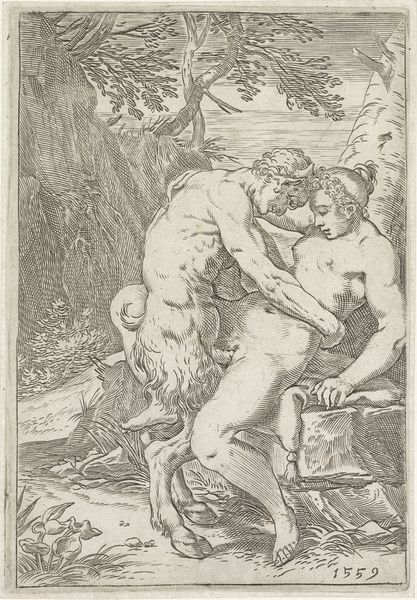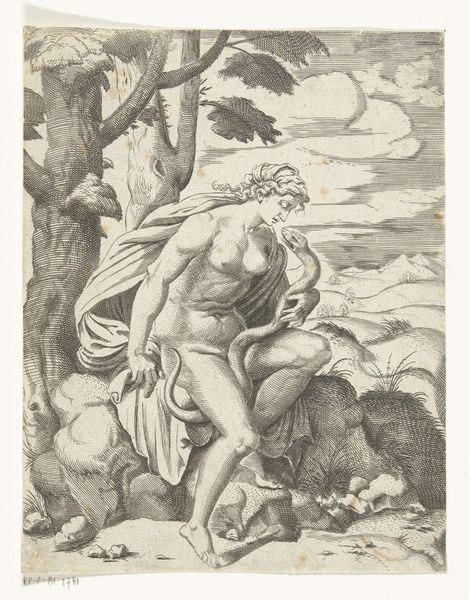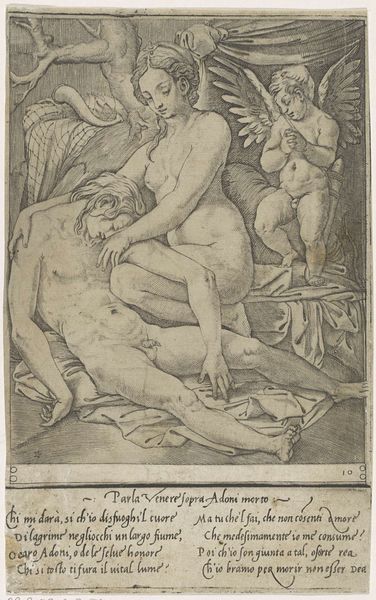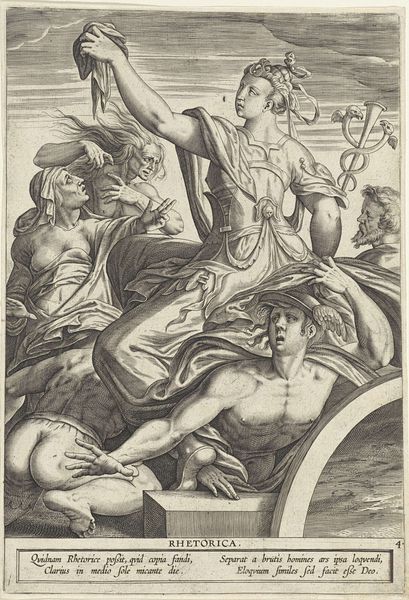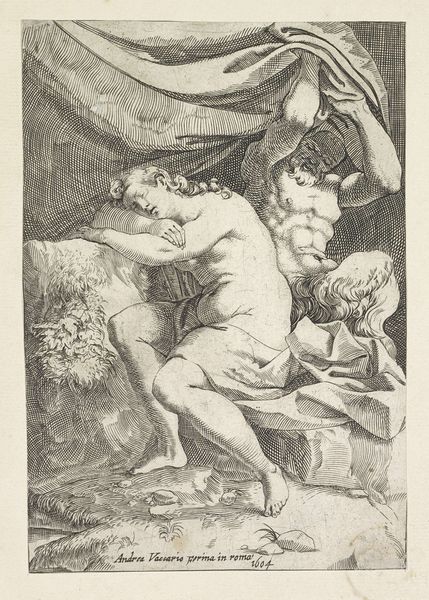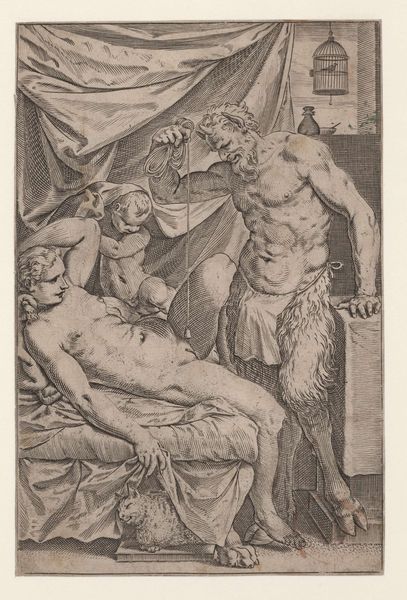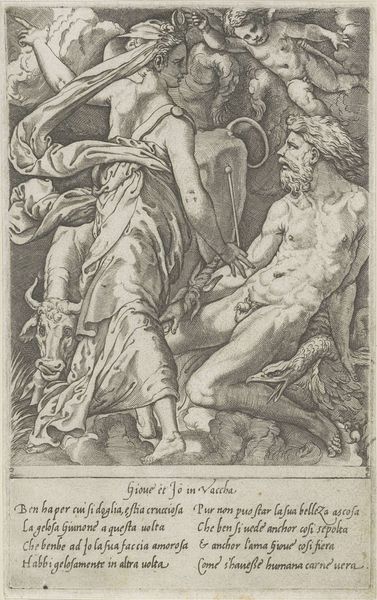
print, engraving
#
allegory
# print
#
mannerism
#
figuration
#
form
#
line
#
history-painting
#
nude
#
engraving
Dimensions: height 218 mm, width 138 mm
Copyright: Rijks Museum: Open Domain
Editor: Here we have "Loves of the Gods," a striking engraving by Giovanni Jacopo Caraglio, dating from 1515 to 1565. The starkness of the black and white lines gives it an almost harsh feel, despite the subject matter seeming rather sensual. What symbols stand out to you in this composition? Curator: The most arresting is Daphne's transformation, wouldn't you agree? See how her limbs morph into laurel, escaping Apollo's grasp? This wasn't just a pretty story for Renaissance viewers, but a powerful allegory. The laurel itself, *Laurus nobilis*, carried potent associations with triumph, immortality, and poetry, themes tightly bound to Apollo himself. Can you sense how this imagery resonates through the centuries, linking the classical world to the concerns of Caraglio’s time? Editor: It's interesting to consider Daphne’s transformation as a form of triumph rather than defeat. So Apollo's desire inadvertently leads to her apotheosis as the embodiment of laurel, representing those themes. Curator: Precisely! Consider how the river god is placed there at the lower part, symbolizing Daphne´s desperate call to her father in this crucial moment. It suggests a potent visual vocabulary readily understood by contemporary audiences. Editor: That’s insightful. I hadn’t focused on how recognizable that visual language would have been. Curator: This enduring cultural memory continues to shape our understanding of desire, agency, and artistic immortality, doesn’t it? The very act of turning away, of resisting, becomes a potent form of creation. Editor: Thinking about the lasting power of these images really enriches the viewing experience.
Comments
No comments
Be the first to comment and join the conversation on the ultimate creative platform.
